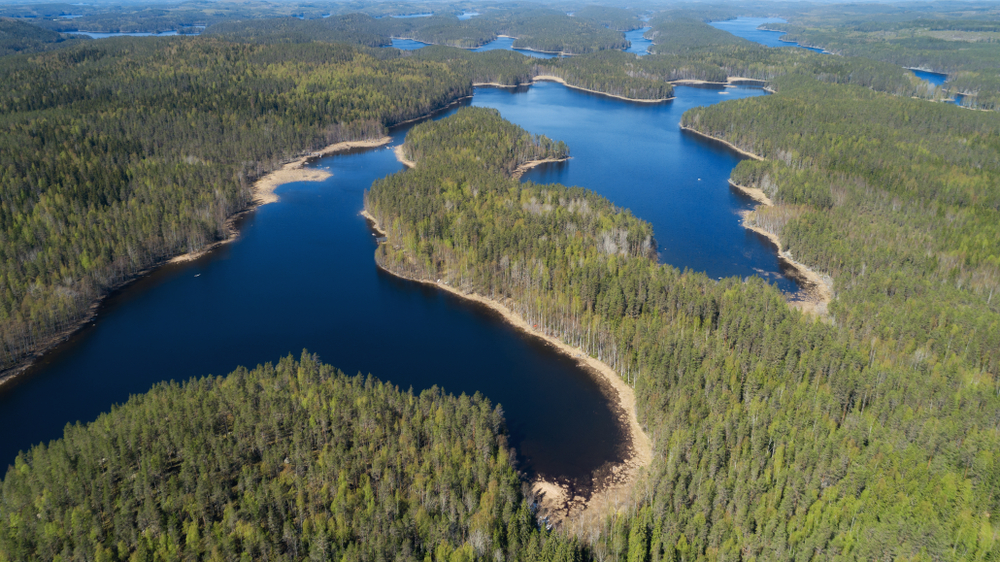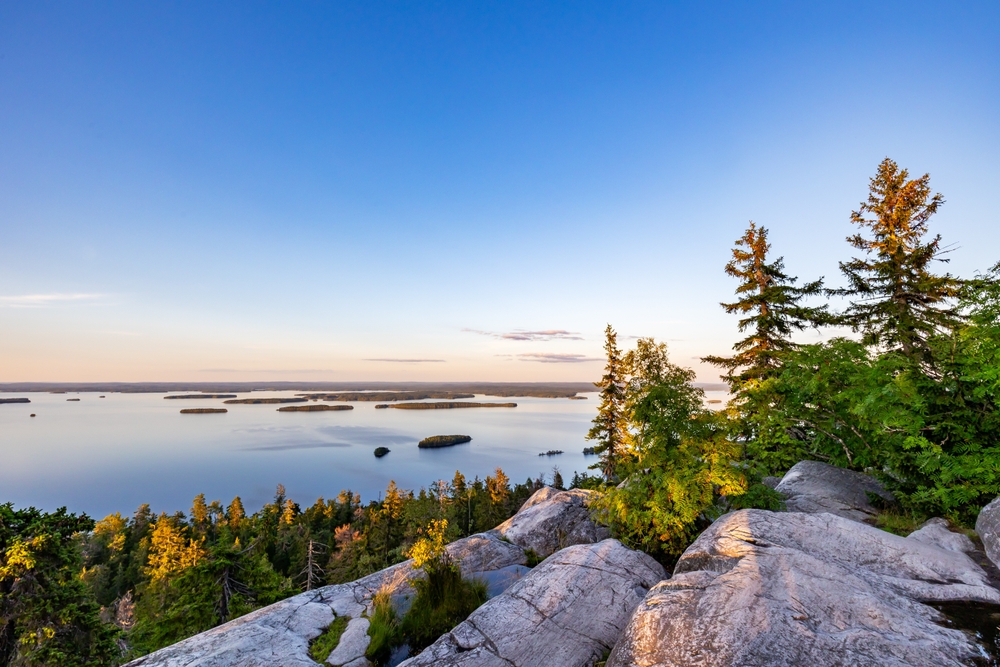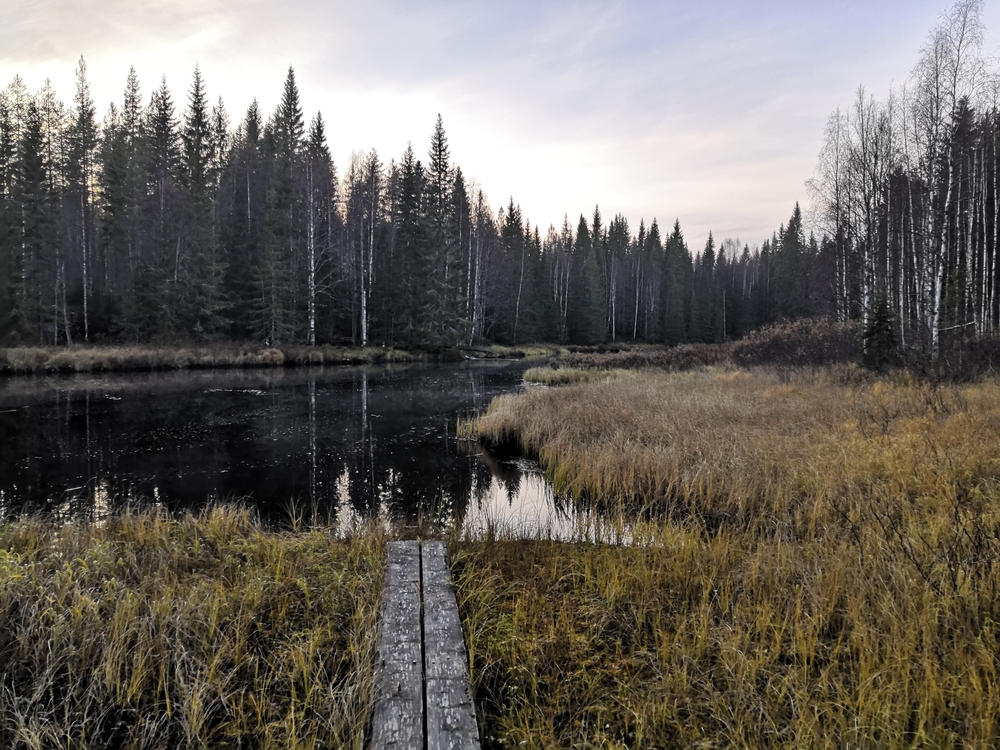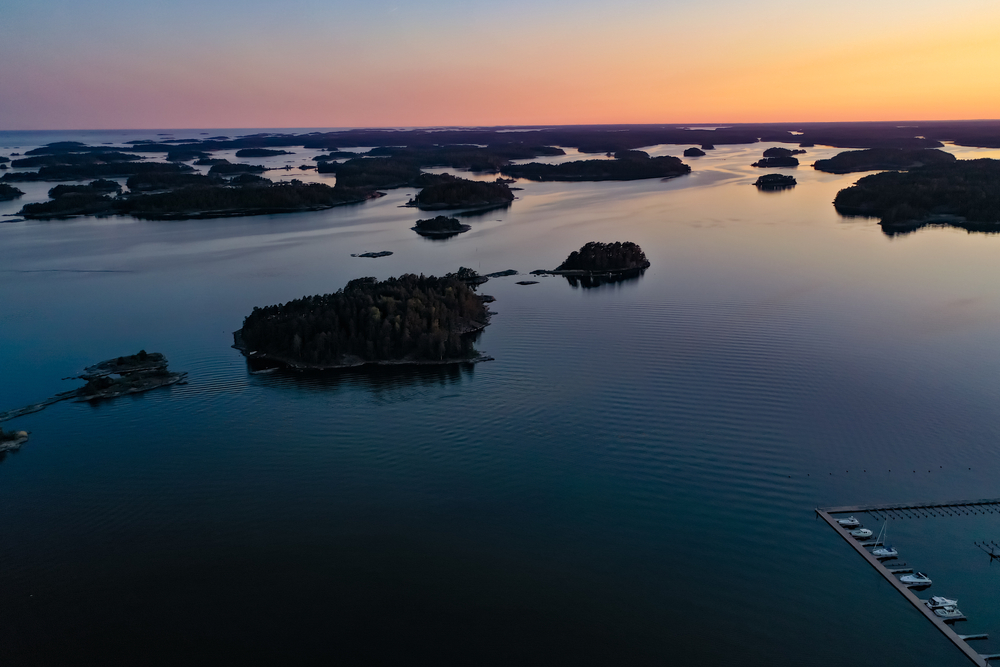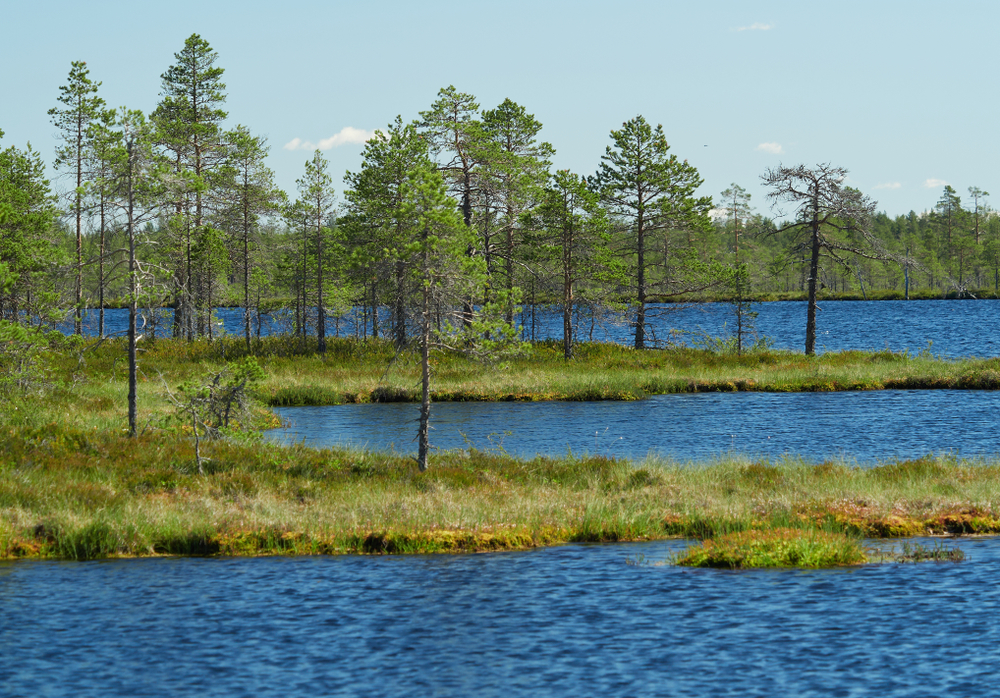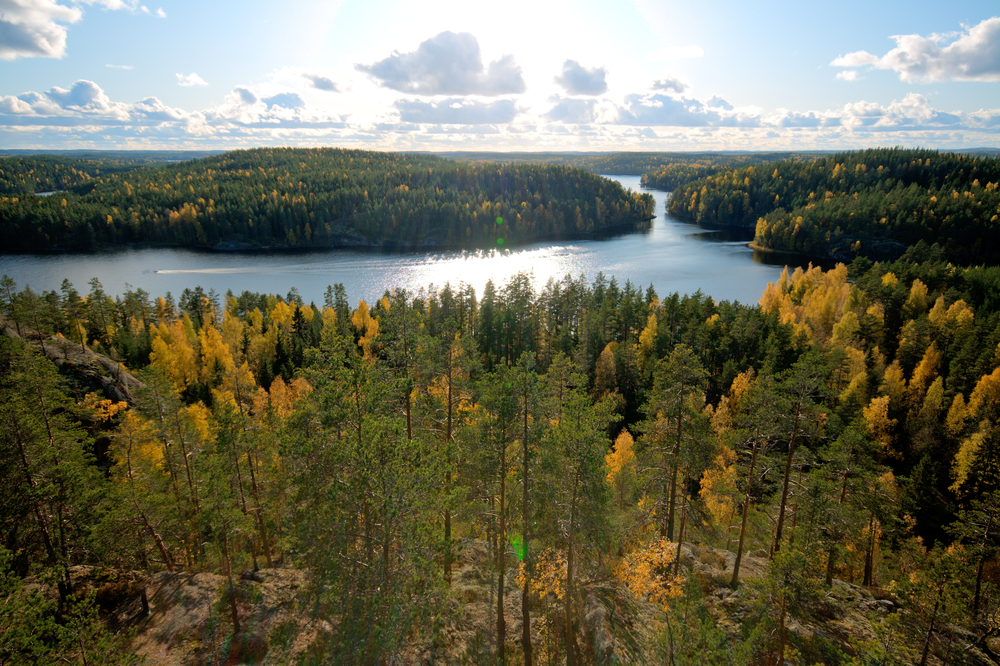Kolovesi Overview
Kolovesi National Park, known locally as Koloveden kansallispuisto, is a pristine natural sanctuary in eastern Finland, covering approximately 9.3 square miles (24 square kilometers).
Situated in the North Karelia region, the park lies within the rugged Finnish Lakeland, renowned for its labyrinth of water channels, ancient rock formations, and serene boreal forests. Established in 1990, Kolovesi is a paradise for nature lovers and adventurers seeking solitude, as it is largely inaccessible by road, making it an ideal destination for canoeing and kayaking.
The landscape of Kolovesi National Park is defined by its undisturbed wilderness, composed of vast water bodies, steep cliffs, and densely forested islands. The park is part of the larger Lake Saimaa basin, the largest lake system in Finland. Towering rocky escarpments, such as the famous Ukonvuori cliff, provide dramatic backdrops to the tranquil waters.
These cliffs are also home to prehistoric rock paintings, dating back more than 5,000 years, offering visitors a glimpse into the region’s ancient past. The forests, dominated by old-growth pines and spruce, create a hushed and mystical atmosphere, making it a prime spot for those seeking a retreat into nature. During the warmer months, the park’s vegetation bursts into life with lush mosses, ferns, and wildflowers lining the shores and islands.
Wildlife enthusiasts will find Kolovesi National Park particularly fascinating due to its rich and unique fauna. The park is one of the last refuges of the critically endangered Saimaa ringed seal (Pusa hispida saimensis), a freshwater seal species found only in this lake system. These rare creatures are a symbol of conservation efforts in Finland and are often spotted lounging on the rocky outcrops or swimming in the lake’s clear waters.
The park is also home to other mammals such as moose, lynx, and otters. Birdwatchers will appreciate the diverse avian species, including ospreys, black-throated loons, and the rare white-backed woodpecker. The combination of pristine waters, secluded islets, and dense forests makes Kolovesi a haven for both migratory and resident bird species.
A key attraction of Kolovesi National Park is its ability to offer an unspoiled, motor-free environment, ensuring a peaceful and immersive nature experience. The park prohibits motorized boats, making it an exceptional destination for paddlers.
Canoeing and kayaking are the primary ways to explore the park, allowing visitors to glide silently through its serene waters while taking in the striking cliffs and forested shores. Several marked water routes guide paddlers through the most scenic parts of the park, with camping sites and lean-to shelters available along the way. Hiking trails are also present on the mainland and islands, leading to viewpoints, ancient rock art sites, and prime wildlife observation spots.
Kolovesi National Park has been at the forefront of conservation in Finland, with a focus on protecting its delicate ecosystem and the Saimaa ringed seal population. Strict regulations, including seasonal access restrictions to protect seal breeding areas, have been implemented to ensure their survival.
Conservation efforts have also targeted preserving the old-growth forests and maintaining the park’s biodiversity. While climate change and human activity pose ongoing challenges, the park’s management continues to implement sustainable tourism practices and habitat protection measures to maintain its ecological integrity.








































































